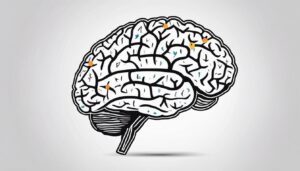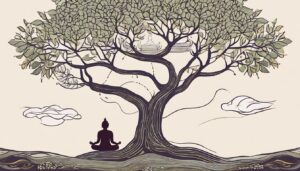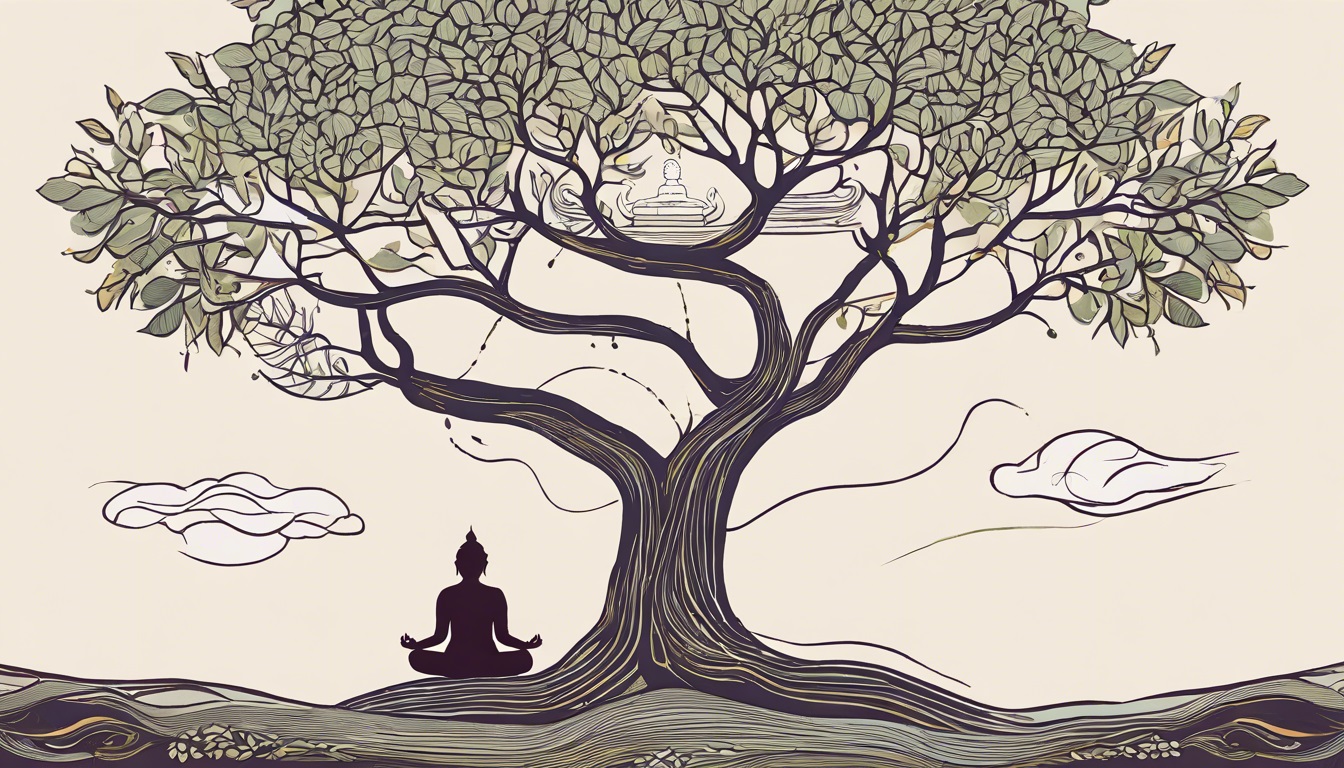In the journey of meditation, it is common for beginners to believe they are focused on a single object, such as the breath, for extended periods. However, as they delve deeper into their practice, they realize that their attention is frequently hijacked by thoughts within seconds. Surprisingly, this realization signifies progress, showcasing the ability to recognize the distractions within the mind.
The human mind possesses remarkable capabilities, yet it struggles to cease the endless chatter of thoughts. Despite our intellectual prowess, we find ourselves engrossed in a continuous stream of thoughts, often unaware of the present moment. Eastern traditions, particularly Buddhism, view this preoccupation with thoughts as the root cause of human suffering.
Being lost in thoughts is perceived as akin to dreaming, a state of ignorance about the present reality. The pivotal issue lies in the identification with thoughts, where individuals perceive themselves as the creators of their thoughts, leading to conflicts and discontent. Meditation serves as a tool to break the grip of incessant thoughts, gradually revealing the transient nature of thoughts within the vast expanse of consciousness.
According to the teachings of Vimalamitra, mastery in meditation unfolds in stages, unveiling a profound transformation in one’s relationship with thoughts. As practitioners delve deeper, they realize that the concept of self is intricately linked to the continuous stream of thinking. The notion of “I” emerges from the unbroken cycle of thoughts, blurring the distinction between the thinker and the thought.
Through disciplined practice, individuals can attain a sense of selflessness in consciousness, shedding light on the illusory nature of the ego. In the realm of meditation, the essence of consciousness is devoid of a self, existing as a witness to the unfolding thoughts and experiences. The profound realization that consciousness precedes the sense of “I” liberates individuals from the entanglement of self-identification, ushering in a realm of clarity and freedom.
Navigating the Enigma of Self-Exploration
The concept of self has long intrigued scientists and philosophers, entwining our inner world with intricate layers of complexity. While numerous studies delve into the essence of self, the profound feeling of “I” often remains overlooked. In the realm of spiritual exploration, the self represents a veiled entity, generating both suffering and confusion, functioning as an illusory yet steadfast locus of our experiences and thoughts.
Distinguishing between the self and various mental states such as self-recognition and volition is essential to unraveling the enigma of selfhood. An intriguing portrayal can be witnessed in a person afflicted by global retrograde amnesia, where memories are erased, yet the core sense of self endures. Despite the obliteration of personal recollections, the feeling of the self persists, grappling with an unsettling detachment from past attachments and future aspirations.
Moreover, phenomena like out-of-body experiences offer a glimpse into the intricate relationship between the self and consciousness. The sensation of transcending one’s physical form, albeit temporarily, underscores the separateness of the self from bodily confines. Even amidst profound alterations in one’s conscious experiences, the core sense of self remains unwavering, embodying a stable vantage point in the flux of thoughts and perceptions.
Scientific exploration often branches into diverse realms, including spatial cognition and bodily awareness, while overlooking the intrinsic nature of the self. The essence of ‘I’ lies in perceiving oneself as the subjective agent behind cognition and perception, distinct from the experiences that mold our realities. The feeling of self encompasses a deep-seated conviction of an inner observer, navigating through the tapestry of consciousness.
Findings from neuroscientific studies accentuate the intricate relationship between body ownership and the sense of self. Compelling illusions such as the “rubber hand illusion” demonstrate the malleability of body perception and its tenuous link to the core sense of self. Despite our sensory faculties’ susceptibility to manipulation, the feeling of self remains unscathed, acting as an anchor amidst perceptual distortions.
In essence, the delineation of self transcends mere bodily and cognitive functions, delving into the ethereal realm of subjective experience. As we untangle the threads of self-exploration, we uncover a profound journey of introspection, seeking to unveil the illusory yet resilient core of our being amidst the intricate tapestry of consciousness and perception.
Unveiling the Enigma of Self-Recognition
Imagine awakening in a mysterious room, your identity shrouded in uncertainty. As you survey your surroundings, a mirror reflects back an image—a red dot adorning your forehead. Yet, your focus shifts to more pressing matters, indifferent to your appearance as a gorilla on a quest for sustenance. This scenario captures the essence of self-recognition, a topic that has captivated researchers exploring the intricacies of consciousness and identity.
The phenomenon of mirror self-recognition has been a focal point in primate and child development studies, often equated with the possession of self-knowledge or consciousness. However, the relationship between self-recognition and the inherent feeling of “I” remains ambiguous. Neurological conditions like the mirror-sign delusion challenge conventional constructs of self-recognition, highlighting the nuanced interplay between self-awareness and personal identity.
Theory of Mind (TOM) explores our ability to attribute mental states to others, a fundamental aspect of cognitive and social development. The connection between awareness of others and self-awareness suggests a profound interdependence. The French philosopher Jean-Paul Sartre postulated that our interactions with others lay the groundwork for self-formation, accentuating the pivotal role of external awareness in shaping our sense of self.

Research on mirror neurons indicates a potential neurological basis for empathy and social cognition, hinting at a shared circuitry underlying self and other awareness. Children with autism, who often struggle with empathetic understanding, show diminished mirror neuron activity. The embodiment of self and other awareness underscores a fundamental aspect of human cognition, shaping our perceptions of the world and our place within it.
The intricate dance of self-recognition and external awareness poses intriguing questions about the nature of consciousness. The internal dialogue we maintain with ourselves reflects a complex interplay of self-perception and relational awareness, blurring the boundaries between “I” and “other.” The enigmatic nature of selfhood beckons us to unravel its mysteries and delve deeper into the labyrinth of human consciousness.
Embarking on a journey of introspection, we confront the profound complexities of self-recognition and its implications for our understanding of identity and existence. As we navigate the intricate tapestry of consciousness, we unravel the threads of selfhood, seeking to illuminate the essence of our being amidst the vast expanse of internal and external realities.
Unveiling the Illusion of Self: A Neurological Exploration
Delving into the complexities of human consciousness unravels a profound enigma—the illusion of a persistent and unified self. Exploring the intricate tapestry of neurology, we confront the stark reality that the conventional sense of self is merely a mirage, a product of transient and diverse processes distributed across the vast neural networks of the brain.
 The notion of a singular and enduring self, entrenched in the depths of our consciousness, crumbles under scrutiny, revealing a fragmented amalgamation of subconscious mechanisms and cerebral structures beyond our conscious awareness. The intricate dance of neural activity orchestrates our emotional responses, linguistic capabilities, and behavioral intricacies, underscoring the decentralized nature of the self within the neural landscape.
The notion of a singular and enduring self, entrenched in the depths of our consciousness, crumbles under scrutiny, revealing a fragmented amalgamation of subconscious mechanisms and cerebral structures beyond our conscious awareness. The intricate dance of neural activity orchestrates our emotional responses, linguistic capabilities, and behavioral intricacies, underscoring the decentralized nature of the self within the neural landscape.
Neurological anomalies, such as selective motion blindness or spatial disorientation, punctuate the intricate interplay between brain function and the illusory construct of selfhood. These disruptions challenge our conventional understanding of consciousness, highlighting the enigmatic nature of the mind-brain relationship and defying the simplistic narratives of subjective experience.
The concept of experiencing consciousness devoid of a traditional sense of self—a riderless horse of awareness—beckons us to unravel the complexities of neural processing and cognitive illusions. The dissolution of the illusory self under close examination echoes the timeless analogy of mistaking a coiled rope for a menacing serpent. As the veil of illusion dissipates, the true nature of the self emerges, transcending the confines of subjective perception and revealing the elusive essence of consciousness.
Drawing parallels to visual illusions, where perceptual distortions unveil the limitations of our sensory faculties, we confront the ephemeral nature of subjective reality. The illusory white square amidst partial circles serves as a poignant metaphor for the transient nature of selfhood, susceptible to dissolution upon closer inspection. Like peeling away layers of illusion, a deeper understanding of consciousness emerges, inviting us to transcend the confines of self-perception and embrace the boundless expanse of experiential reality.
In the quest for self-discovery and neurological enlightenment, we confront the ethereal nature of the self, paving the way for a profound exploration of consciousness beyond the confines of conventional wisdom. The journey of self-inquiry beckons us to unveil the illusion of self, to transcend the boundaries of subjective perception, and to embrace the infinite mysteries of the human mind.



 The notion of a singular and enduring self, entrenched in the depths of our consciousness, crumbles under scrutiny, revealing a fragmented amalgamation of subconscious mechanisms and cerebral structures beyond our conscious awareness. The intricate dance of neural activity orchestrates our emotional responses, linguistic capabilities, and behavioral intricacies, underscoring the decentralized nature of the self within the neural landscape.
The notion of a singular and enduring self, entrenched in the depths of our consciousness, crumbles under scrutiny, revealing a fragmented amalgamation of subconscious mechanisms and cerebral structures beyond our conscious awareness. The intricate dance of neural activity orchestrates our emotional responses, linguistic capabilities, and behavioral intricacies, underscoring the decentralized nature of the self within the neural landscape.